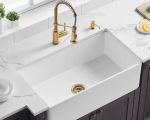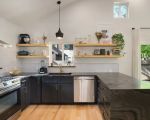How to Build a DIY Bookshelf for Your Home Office
As a home office owner, you probably understand the need for organization and functionality. One of the best ways to bring order to your workspace is by having a practical yet stylish bookshelf. Building your own DIY bookshelf can be an exciting and rewarding project that not only saves you money but also adds a personal touch to your home office. In this article, I'll walk you through the process of creating your own bookshelf that perfectly suits your style and storage needs.
1. Planning Your DIY Bookshelf
Before diving into the building process, it’s important to take some time to plan out your project. Start by considering the following factors:
- Space Availability: Measure the space where you want to place your bookshelf. Ensure that the bookshelf size fits comfortably within your office without overcrowding the room.
- Style: Think about the style that would complement your office décor. Whether you prefer a modern, rustic, or minimalist design, your bookshelf should reflect your personal taste.
- Storage Needs: How many books or office supplies do you need to store? This will help you determine the number of shelves and their spacing.
2. Materials and Tools You’ll Need
Once you’ve got your design ready, gather the materials and tools needed for your DIY bookshelf project. Below are the essentials:
- Materials: You will need wood (plywood, MDF, or solid wood), screws, wood glue, and finishing products like paint or varnish for your desired look.
- Tools: A saw (circular or jigsaw), drill, measuring tape, level, screwdriver, clamps, and sandpaper are the essential tools for this project.
3. Step-by-Step Guide to Building Your Bookshelf
With your materials and tools in hand, follow these steps to build your bookshelf:
Step 1: Cut the Wood
Start by cutting your wood to the desired lengths for the top, bottom, sides, and shelves of your bookshelf. Use a saw and ensure that each cut is straight and precise. Measure and mark your cuts carefully before cutting to avoid any mistakes.
Step 2: Assemble the Frame
Begin by assembling the sides, top, and bottom of your bookshelf. Use wood glue at the joints for extra strength and secure them with screws. Use a level to ensure everything is aligned properly before tightening the screws.
Step 3: Attach the Shelves
Once the frame is assembled, it’s time to add the shelves. Depending on your design, you can either make the shelves adjustable or fixed. For adjustable shelves, install shelf brackets or metal pins to allow flexibility. For fixed shelves, screw them directly into the side panels.
Step 4: Sand and Finish
After assembling the bookshelf, it’s time to sand the edges and surfaces to smooth them out. Use a fine-grit sandpaper and smooth out any rough edges. Once you’ve achieved a smooth finish, apply your chosen finish—whether paint, stain, or varnish—to give it a polished look and protect the wood from wear and tear.
Step 5: Install in Your Home Office
Now that your bookshelf is ready, it’s time to install it in your office space. Ensure that it is level, and if necessary, secure it to the wall for added stability. Consider adding decorative elements like plants or framed photos to personalize the shelf further.
4. Tips for Customizing Your Bookshelf
Once your DIY bookshelf is built, you can customize it further to make it your own:
- Add a Back Panel: If you want to give your bookshelf a more finished look, consider adding a back panel. This can help make the bookshelf appear more cohesive and sturdy.
- Use Creative Shelving: Don’t just limit yourself to traditional horizontal shelves. You can add vertical dividers, cubby-style storage, or even floating shelves for a more modern aesthetic.
- Play with Colors: If you want to make your bookshelf stand out, use bold colors or even wallpaper the back panel for a unique touch.
5. Why a DIY Bookshelf is a Great Investment
Building your own bookshelf is not only a fun project, but it also comes with several benefits:
- Customization: You can build a bookshelf that perfectly fits your needs in terms of size, style, and function.
- Cost-Effective: DIY projects are often more affordable than purchasing pre-made furniture, and you get to choose the quality of the materials.
- Personal Satisfaction: There’s something incredibly rewarding about creating something from scratch that adds value to your home office.
As you can see, building your own DIY bookshelf for your home office is a manageable and rewarding project. With a little time, effort, and creativity, you can craft a functional and beautiful piece of furniture that enhances your workspace.
Looking for additional tools and supplies for your next DIY project? Check out Improvement for a wide range of products to support your home office upgrades.








